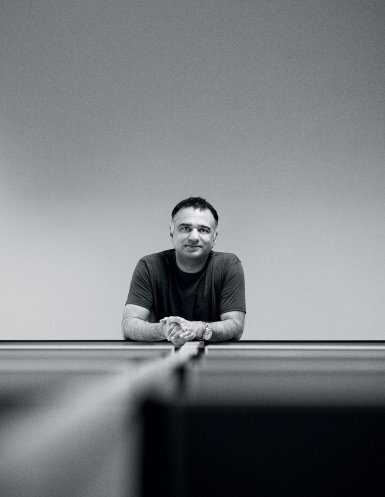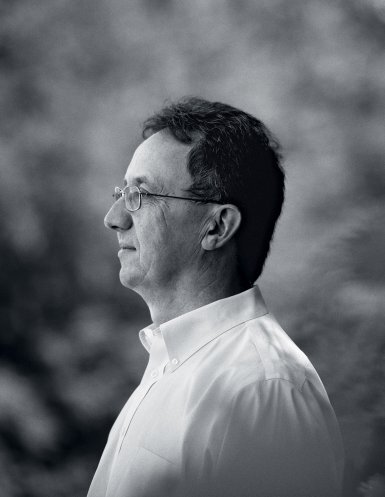How These 5 Immigrant Entrepreneurs Are Living the American Dream
Guido Kovalskys of Nearpod. Edwin Tse
Starting a successful business after emigrating to another country. All of these founders did just that, moving thousands of miles from home to where their talents and drive would be most appreciated. "The spirit of entrepreneurship in America is unparalleled," says Vinita Negi, the New Delhi-born founder of Trigent Solutions (No. 369 on this year's Inc. 500), a D.C. area-based business and IT consultancy. "There's no comparison to what it's like in India, or even other countries." They still call it the American dream. These founders show us why.
THE EDUCATOR
Guido Kovalskys was nervous. A native Argentine, he'd emigrated in 1996 to the U.S. to attend business school at UC Berkeley, and afterward scored a job with the consulting giant McKinsey, where he was readying himself to make a big presentation. Then, an Indian colleague took him aside. "Guido, they'll notice you're a foreigner," he said. (They would, given Kovalskys's thick accent.) "But you have to believe they are thinking, 'If this guy is here, he must be really, really good.'" That steadied his nerves, and made him see the power in his upbringing.
Today, given Kovalskys's leading-man looks, easy charm, and strong résumé--his first company, Bionexo, which was founded in 2000, remains a dominant online health care platform in Spain and his native South America--it's hard to imagine any investor rejecting him. Still, he's heard "We're not into it" far too many times from Silicon Valley's top VCs.
Guido Kovalskys Nearpod
Inc. 500 rank 297
Three-year growth 1,320.2%
2015 revenue $3.3 million
EDWIN TSE
Granted, Kovalskys's company Nearpod is based in Hallandale Beach, Florida, just north of Miami and about as far from Silicon Valley as you can get while remaining in the continental U.S. But that's fine with Kovalskys, who long ago grew accustomed to being an outsider. He was raised in Buenos Aires. His mother was Sicilian, and his father, an economics professor, was born to Lithuanian and Polish parents. "They spoke different languages at home," he recalls, "and were really disconnected from their roots." His many friends had similar backgrounds--thanks to the waves of Italian, German, Russian, and Spanish immigrants who flocked to Argentina in the early 20th century--so he mostly took his multicultural background for granted. Until, at least, that day at McKinsey.
In 2003, Kovalskys, who's now 47, co-founded the Miami-based software developer Panarea Digital--named for an island near where his mother was born--and hired engineers from Argentina and Brazil. "The second client," Kovalskys recalls, "was a company called Disney."
By 2010, Panarea Digital had a good business making mobile apps and games. But Kovalskys started thinking: What if he could bring software into the classroom so teachers could sync their lessons with students' devices, keep those students engaged, and then get real-time feedback on their mastery of each lesson with polls or quizzes? The K-12 schools around where he lived were already using iPads. "It seemed like a huge opportunity," says Kovalskys, a father of two.
After he'd devoted more than a year to research, a free version of Nearpod launched in Apple's App Store in the spring of 2012. "On the first day, we had thousands of downloads," Kovalskys says, marveling at the memory of his team watching the numbers mount on a giant TV. (Nearpod--which currently consists of programs incorporating 360-degree images, text, and virtual reality--sells individual lessons to teachers for an average of $2.99; schools pay roughly $2,000 to $5,000 a year for bulk licenses.)
Securing funding in Silicon Valley proved much harder than launching with a bang. Yes, some teachers are reluctant to bring technology into their classes. But some of Nearpod's earliest sales came from rural areas, "not in New York or San Francisco, where they're used to sophisticated accents," jokes Kovalskys. Still, "if you are not a Silicon Valley-based entrepreneur, what you've done before doesn't matter," Kovalskys continues. "People don't give you credit for the stuff you've done elsewhere. Investors would tell me, 'You are not here. You are in Florida--in a market that we still don't really see.' "
In 2012, Kovalskys secured a fellowship at the Hasso Plattner Institute of Design at Stanford, aiming to beef up his Silicon Valley cred while still growing Nearpod. It helped open doors to angel investors, who contributed $750,000 in seed funding. A stint in Stanford's incubator, StartX, continued the momentum. By 2016, he and Nearpod had the kinds of reputations--more than 10,000 schools and 3.5 million students were using the platform each month--that are impossible to ignore. In May, the company raised an additional $10 million; investors included Salesforce founder Marc Benioff and Intuit co-founder Scott Cook.
Through it all, Nearpod has maintained its "Spanglish vibe," as one employee puts it. "Being an immigrant," Kovalskys says, gives you "a wider view of the world, which you can apply to the product and services you build."
THE WHEELER-DEALER
Angela Romero CentralCloseout.com
Inc. 500 rank 398
Three-year growth 961%
2015 revenue $4.4 million
EDWIN TSE
"Being a woman is hard in this business. An immigrant? Even worse," says Angela Romero, who founded CentralCloseout.com, which wholesales liquidated beauty and health products, in 2010. The Colombian native, 47, encountered suppliers who didn't want to deal with her "simply because I'm a woman" and others who imposed strict two-week repayment terms on her business when competitors received 60 days. But Romero, who tapped her savings to bootstrap CentralCloseout.com from her tiny, one-bedroom apartment, no longer lets slights like those get to her. Today, she manages 14 employees and a 17,000-square-foot warehouse that holds everything from Almay Matte Finish Pressed Powder to OPI nail polish, which she sells to buyers worldwide, and especially in Latin America, her Hollywood, Florida-based company's biggest market. A move into selling new cosmetics could further her reach. "You know what gives me confidence?" she asks. "Knowing where I am right now."  
THE TECH TITAN
Dheeraj Pandey Nutanix
Inc. 500 rank 86
Three-year growth 3,565.8%
2015 revenue $241.4 million
EDWIN TSE
In 1997, Dheeraj Pandey arrived in Austin with two suitcases and $900 in his pocket. He had just taken the first flight of his life, from Bihar, "the most lawless and poorest state of India," he says, to pursue a PhD in computer science at the University of Texas. But in his second year, Pandey dropped out to become an engineer instead. After nine years in Silicon Valley, including nearly five at Oracle--and surviving the bursting of the tech bubble in 2000--Pandey was ready to strike out on his own. With his green card and no more than $100,000 in savings, Pandey started Nutanix in 2009, with a goal to "make IT infrastructure simple and elegant." Geared toward the world's largest companies, Nutanix, based in San Jose, folds computing, storage, and virtualization resources--which allow customers to "see" their IT systems--into two standalone products. Today, he has more than 2,000 employees in 40 countries, and last December Nutanix filed to go public. "The biggest challenge is personal," says the 41-year-old Pandey, who's come a very long way since landing in the U.S. "Anytime I feel like there's too much to lose, I feel like I'm not taking risks." 
THE PROBLEM SOLVER
Radek Maly Highland Project Logistics
Inc. 500 rank 23
Three-year growth 7,903.6%
2015 revenue $8 million
EDWIN TSE
Once Radek Maly understood that the profits at his job in Prague were supporting the Communist government, he knew he had to leave. "That was a deal I could not live with," he says. At 23, he bought a ticket to Greece and never went back. His first job in America, in Atlanta in 1988, was washing dishes for an ice-cream shop for $3.50 an hour. Years later, after working for several freight- forwarding companies, Maly, who's now 52, founded Highland Forwarding. It succeeded, and after recognizing a hole in the market for handling oversize cargo, he self-funded the startup of Highland Project Logistics, in Londonderry, New Hampshire, in 2011. "We're dealing with international clients who deal with international businesses, so it adds credibility when you come from another country," he says. There are flagpoles on Highland Project's lawn, so Maly's eight employees can fly their own flags, and foreign visitors are greeted by their country's flag and a rendition of their national anthem. "That helps us get new business," Maly says. "They see how much we value the partnership."
THE AD WHIZ
Babak Hedayati TapClicks
Inc. 500 rank 87
Three-year growth 3,534%
2015 revenue $5.6 million
EDWIN TSE
In 1978, Babak Hedayati left his home in Tehran to live with his older brother near Santa Cruz, California. Being the youngest kid in 10th grade--he was 12, but excelled on his placement tests--was the least of his problems: He also didn't speak English. "It was rough," says Hedayati, who grew up with little financial support and his parents thousands of miles away. Inspired by a lecture given to his engineering class at San Jose State University by fellow Persian (and eventual Twitter executive chairman) Omid Kordestani, Hedayati sought a career in marketing. But seeing an opportunity to streamline the data behind ad campaigns, in 2009 he started the San Jose-based company that would become TapClicks. Its customizable dashboard--used by more than 5,000 companies, including News Corp and Hearst--offers real-time analysis of ads' daily performance. "If you are an immigrant hoping that you can make a better life for yourself, you don't overlook opportunities," he says. "There is a hunger for success, for showing that you can add value as a citizen."







